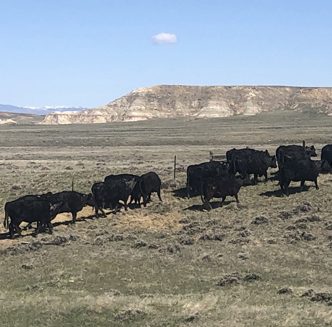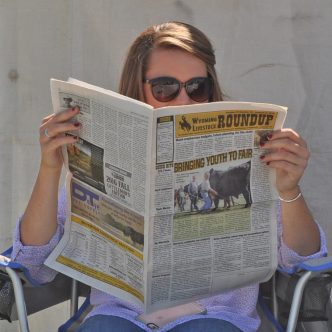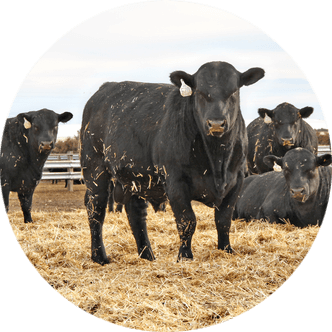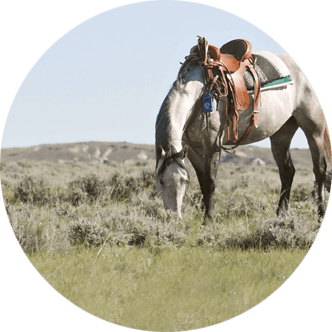Creepy Cowboy Chronicles: Native legends linger in Laramie
When October winds blow across the Laramie Plains, they carry more than the bite of oncoming winter – they whisper the echoes of people who walked the land long before the University of Wyoming (UW) was established.
Before the Cowboy State had its iconic mascot, motto and university, the region was home to the Cheyenne, Arapaho, Crow and Shoshone Tribes, and while UW has taken root with traditions of its own, the cultural spirit of those first inhabitants still linger – woven into the land, the wind and the local lore.
Buried history
According to several sources, some of UW’s oldest buildings, including Knight, Ross and Hoyt halls, were built on or near Laramie’s oldest cemetery.
During original construction of Knight Hall in 1940-41 by the Works Progress Administration, workers discovered multiple unmarked graves – believed to be both Native peoples and white settlers – and construction was halted as the remains were exhumed and moved.
Students and staff have whispered about strange happenings ever since, with the majority of paranormal activity occuring during the evening.
Some have reported sightings of a young girl sitting on the first floor of the west wing before vanishing without a trace, while unknown voices and other strange noises are often heard on the second floor.
However, the spookiest place in the building is said to be the basement, where many have reported hearing beating drums and experienced the feeling of being watched.
Little people of the plains
Farther from campus, the Shoshone legend of the Nimerigar is a tale that puzzles even the most skeptical.
Translated to “little people” or “tiny people eaters,” tales of ancient races standing only 20 to 36 inches tall and hidden among the mountains and valleys of North America are widespread among Native American Tribes, bearing some similarities to the sprites and fairies of European folklore, although oral traditions of Native culture predate any contact with European settlers.
According to the Shoshone who roamed the plains of Wyoming, the Nimerigar were said to be small, dangerous beings often armed with tiny bows and poisoned arrows who dwelled in the Wind River and Pedro Mountains.
Some tales recount Nimerigar stealing babies during the night, which they later ate, and killing sick and/or elderly members of their own Tribe with a fatal blow to the head.
While some believe Nimerigar are simply the stuff of legends, several discoveries may point to the contrary.
One of the most significant of these is a fully-formed, 14-inch mummy found in 1932 by two men who were digging for gold in the San Pedro Mountains, about 60 miles southwest of Casper.
To prove – or disprove – that the mummy was a hoax, extensive tests were performed, and X-rays showed a “perfectly-formed, manlike skeleton which had been violently killed, as the spine was damaged, the collarbone broken and the skull smashed,” according to a Legends of America article.
The article notes scientists estimated the mummy was a 65-year-old, full-grown adult at the time of his death.
“These examinations were allegedly performed by the American Museum of Natural History and certified genuine by the Anthropology Department of Harvard University,” the Legends of America article reads. “However, alternate reports also say when UW examined the mummy, the body was found to be a deceased child.”
Though the origin and current whereabouts of the “Pedro Mountains Mummy” is currently unknown, it continues to be a scientific curiosity and a character of rich local legend.
In fact, modern storytellers claim Nimerigar still roam the ridges west of Laramie, where, if it’s quiet enough, one might hear them moving through the sage – unseen but watching.
Voices of Vedauwoo
Native legend also lingers among the unique geographic features of Vedauwoo, a stretch of remarkable rock formations jutting alongside Interstate-80 between Laramie and Cheyenne.
According to a May 5, 2021 article published by Visit Laramie, archaeological evidence suggests humans first inhabited the area roughly 8,000 years ago, and the stone knives and arrowheads found here indicate its earliest inhabitants were nomadic hunters.
In addition to its one-of-a-kind topography, sources note Vedauwoo has become known for its spiritual and paranormal associations, which likely stem from its name and the eerie sounds made by wind moving through the rock formations.
Named for the Arapaho word “bi-ito’o’wu” meaning “land of the earthborn spirits,” it is said Native Tribes considered Vedauwoo a sacred place, where spirits resided in every facet of nature, and was probably used as a site for spiritual rituals and vision quests.
Today, visitors of Vedauwoo have had their own spiritual and paranormal encounters.
Campers and hikers have reported hearing unsettling sounds like whispers and moans, while others have had the feeling of being watched.
One urban legend tells of the shapeshifting “Vedauwoo Monster.”
The story warns if an owl calls out at night and a person walks toward it, the monster will be unleashed. To protect oneself, they should go straight home, avoiding its path, and leave their shoes outside to mislead the monster.
Hannah Bugas is the managing editor of the Wyoming Livestock Roundup. Send comments on this article to roundup@wylr.net.





